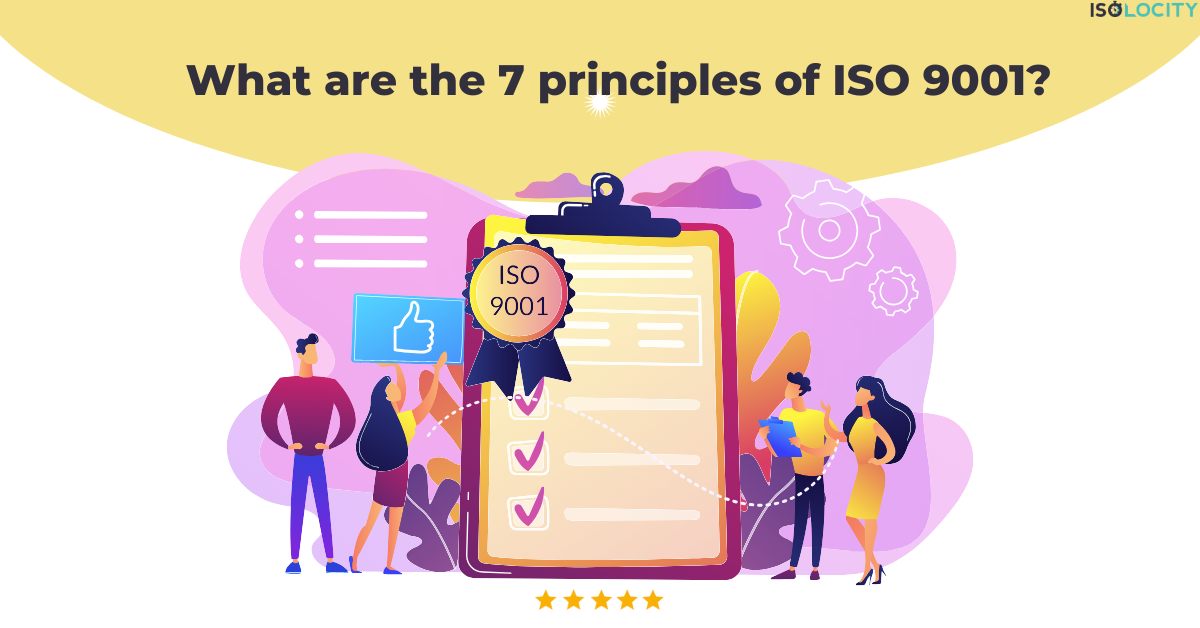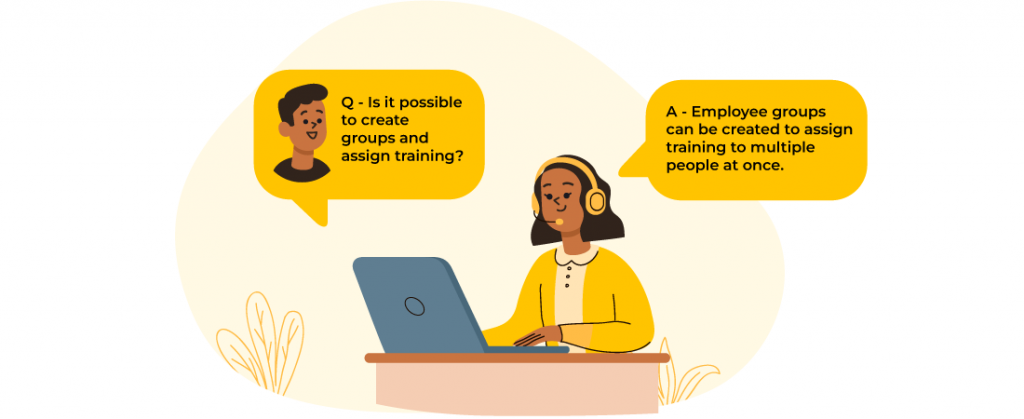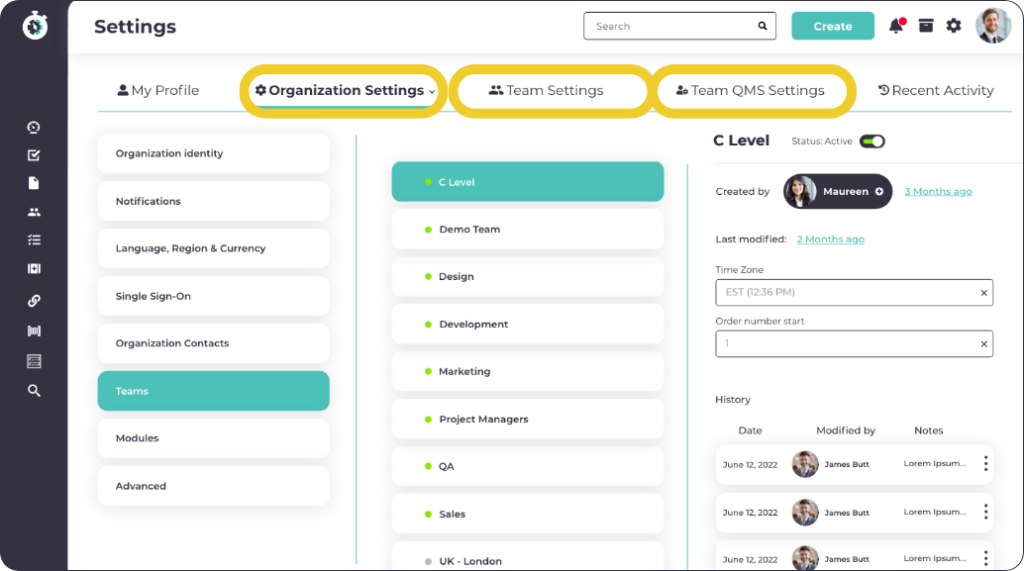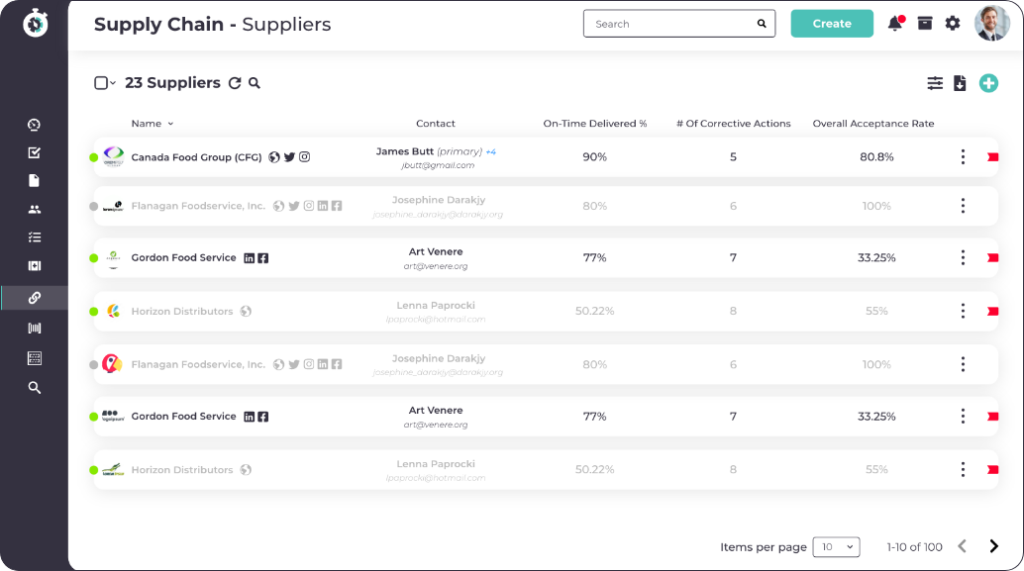ISO 9001 has a huge impact on businesses and organizations all over the world. With over 2.1 million ISO 9001-certified companies, it has an unmatched history of driving continuous growth, customer satisfaction, and operational excellence. All 10 clauses of ISO 9001 are based on some fundamentals. One of the most fundamental and googled questions about ISO 9001 is, “What are the 7 principles of ISO 9001?”
But if you are not familiar with Isolocity, let us give you a quick overview of Isolocity first. The very name itself is a combination of ISO and velocity. Isolocity is ISO 9001-compliant quality management software, and therefore we are quite familiar with all the intricacies of ISO 9001. Our founders have two decades of experience with ISO 9001. We have recently been honoured with badges like “Most Recommended,” “Best Customer Support” from Software Advice, “Best Value” from Capterra, “Top 20 Highest-Rated QMS” from G2, and many more.
Now let’s begin with the 7 principles of ISO 9001, which are Customer Focus, Leadership, Engagement of People, Process Approach, Improvement, Evidence-Based Decision Making, and Relationship Management.
Special Note:
If you are looking for a free, downloadable ISO 9001 Audit Checklist, you can get it from our downloadable section.
Not Fond of Reading? Watch It Then !
1. Customer Focus
According to ISO 9001, customer focus entails exceeding customer expectations and comprehending their needs. This involves actively listening to customer feedback. Additionally, it requires making necessary adjustments to products or services. Moreover, staying updated with innovations is essential to enhance customer satisfaction. Ultimately, a customer-focused approach ensures commitment to providing value and fostering enduring connections with clients.
Example:
A furniture maker studies consumer preferences and trends in furniture design by conducting market research and asking for input. The business creates new product lines or alters current ones in order to better meet client expectations based on this knowledge.
Advantages:
- Increased Customer Loyalty: Building closer ties with customers by attending to their needs and expectations encourages greater customer loyalty and repeat business.
- Better Brand Reputation: Placing a high priority on customer satisfaction improves the company’s reputation, drawing in new clients and securing its place as a reliable market leader.
ISO 9001 Clause 9.1.2: Customer Satisfaction:
As a critical performance indicator, companies must track and evaluate customer satisfaction.
This sentence highlights how crucial it is to aggressively seek out client input and respond to any problems or concerns right away.
Role of QMS:
Improving customer satisfaction is the main goal of quality management software. Thus, every module, compliance, activity, and task inside a QMS ensures that the final product meets the customer’s expectations for quality.
2. Leadership
According to ISO 9001, leadership refers to the duties and obligations of upper management in creating and preserving an atmosphere inside the company that is favorable to accomplishing the organization’s quality goals and guaranteeing the efficiency of the quality management system.
Special Note:
We dedicated a whole blog post to this subject. To find out more, see this: Importance of Leadership in Quality Management
Example:
A CEO in the healthcare sector shows leadership by fostering a culture of quality throughout the company. The CEO encourages staff members at all levels to place a high priority on quality care delivery through proactive communication, resource allocation, and personal participation in quality initiatives. Better patient outcomes and organizational performance are the ultimate results of this dedication, which also promotes accountability and continual development.
Advantages:
- Improved Organizational Alignment: Skilled leadership makes sure that all staff members share the same vision for the organization’s quality goals and collaborate to realize them.
- Enhanced Employee Morale: Good leadership creates a supportive work atmosphere, giving staff members more authority and enhancing morale, which raises engagement and productivity.
ISO 9001 Clause 5.1: Leadership and Commitment:
According to this clause, senior management must show initiative and a dedication to fulfilling demands from clients and raising client satisfaction levels.
Role of QMS:
Leaders are better equipped to effectively lead the quality management agenda throughout the company when they use quality management software like Isolocity. Isolocity gives leaders the ability to make data-driven decisions and utilize input from several sources by centralizing quality management processes. This encourages executives to be actively involved and visible throughout the organization, which strengthens their dedication to excellence in quality.
3. Engagement of People:
In accordance with ISO 9001, the term “engagement of people” describes how people at all organizational levels work together to accomplish quality goals and put the quality management system (QMS) into place. Moreover, this principle acknowledges the importance of giving workers the tools they need to successfully contribute to the success and ongoing development of the company.
Example:
One example would be deploying cross-functional quality improvement teams with members from different departments. These teams work together to find opportunities for improvement, come up with fixes, and put improvements into place. This encourages employee participation and a sense of ownership over high-quality results. This approach is aligned with the Plan Do Check Act ( PDCA) structure of the ISO 9001 standard.
Advantages:
- Enhanced Departmental Collaboration: Including staff members in the process of accomplishing company goals increases communication and creates a more cohesive team environment.
- Increased Retention Rates: Involving staff members actively in quality management creates a sense of loyalty and ownership among them, which lowers turnover and keeps top talent in the company.
ISO 9001 Clause 7.1.2: People:
This section deals with the organization’s assessment of the level of competency required of employees carrying out tasks that have an impact on the quality of the product, as well as the offering of training or other measures to meet these requirements.
Role of QMS:
Isolocity and other QMSs enable the formation of teams or employee groups within the company, facilitating employee participation and collaboration. The QMSs also identify training competency and capability gaps and drive refresher training when required.
4. Process Approach
According to ISO 9001, the process approach is a basic idea that stresses managing resources and activities as linked processes in order to efficiently and effectively achieve desired results. The process approach sees an organization as a network of interconnected processes that work together to achieve the organization’s goals, as opposed to seeing it as a collection of separate departments or functions.
Example:
When installing engines, chassis, and interiors, assembly line workers in the automotive industry adhere to a predetermined task sequence. Throughout the manufacturing process, this methodical approach guarantees effectiveness, consistency, and quality, which eventually results in the creation of dependable automobiles that satisfy consumer expectations.
Advantages:
- Streamlined Operations: By streamlining operations and reducing errors, the process approach increases efficiency and minimizes errors.
- Enhanced Compliance: Processes that are in line with ISO 9001 standards guarantee regulatory compliance while lowering risks and improving organizational performance.
ISO 9001 Clause 4.4 – Quality Management System and its Processes:
The necessity of establishing, implementing, maintaining, and continuously improving a quality management system (QMS), together with the processes and interactions that make up the QMS, is emphasized in this clause. Organizations can achieve quality targets and meet customer needs by addressing this clause and ensuring that their QMS is built and operated based on a process approach, with clear identification, documentation, and management of critical processes.
Role of QMS:
By centralizing process documentation, integrating workflows, and offering real-time performance insights, Isolocity helps enterprises improve efficiency and adhere to ISO 9001’s PDCA process approach.
5. Improvement:
The ISO 9001 improvement principle emphasizes the importance of continuously enhancing the efficiency of organizational processes and the quality management system (QMS). This concept is rooted in the notion of continuous improvement. It involves identifying areas for enhancement, making adjustments, and evaluating the outcomes to foster ongoing progress.
Example:
A company uses customer feedback to pinpoint a recurring problem with product problems. They quickly put remedial measures into place to deal with the underlying reason, improve testing protocols, and create more transparent lines of communication. As a result, there is an improvement in product quality, which raises consumer happiness and retention.
Advantages:
- Enhanced Productivity and Efficiency: Continual improvement leads to streamlined procedures and optimal resource allocation, which raises efficiency and productivity.
- Competitive Edge: By continuously providing better products and services, which increase customer happiness and loyalty, organizations that prioritize improvement acquire a strategic advantage.
ISO 9001 Clause 10 – Improvement:
This section states that companies must always increase the efficiency of their procedures and quality management system (QMS). In order to promote continuous improvement and guarantee alignment with organizational goals, it includes identifying possibilities for improvement, putting corrective and preventive measures into place, and keeping an eye on improvement projects.
Role of QMS:
By complying with ISO 9001 requirements, streamlining procedures, keeping an eye on performance, and enabling quick remedial measures, Isolocity QMS promotes improvement. By utilizing well-organized CAPA procedures and strong analytics, it facilitates informed decision-making, encourages stakeholder participation, and fosters a continuous improvement culture.
6. Evidence-Based Decision Making
According to ISO 9001, making well-informed decisions based on objective evidence and data analysis as opposed to depending exclusively on gut feelings or subjective judgment is known as “evidence-based decision-making.” This principle highlights the significance of obtaining, assessing, and applying pertinent data to assist organizational decision-making processes.
Example:
For instance, a hospital evaluating whether to implement a novel surgical approach for a specific medical condition would collect information from research studies, clinical trials, and patient outcomes. This is done in order to assess the new technique’s safety and effectiveness in comparison to current practices. The hospital avoids depending only on anecdotal evidence or expert opinions. Instead, they carefully examine the available data. They take into account variables like patient recovery timeframes, success and complication rates, and recovery rates. This thorough analysis guides the decision on whether to use the new surgical procedure.
Advantages:
- Improving Problem-Solving: Organizations may quickly identify the core causes of problems with the use of evidence-based decision-making. This facilitates focused and efficient problem-solving activities.
- Strategic Adaptability: Organizations can ensure agility and resilience in dynamic contexts by quickly adjusting plans and tactics in response to changing circumstances and utilizing objective data.
ISO 9001 Clause 9.1.3: Analysis and Evaluation of Data:
According to this clause, businesses must choose, gather, and evaluate the relevant data to show the applicability, sufficiency, and efficiency of the quality management system (QMS). Furthermore, it highlights how crucial it is to use data-driven insights to guide decisions and promote ongoing organizational improvement.
Role of QMS:
Isolocity QMS, in accordance with ISO 9001 standards, simplifies data administration, analytics, and compliance. Consequently, it enables businesses to make deft decisions, automate procedures, and promote continuous improvement.
7. Relationship Management
According to ISO 9001, relationship management is the strategy used by enterprises to handle their dealings with pertinent interested parties. These parties include suppliers, employees, customers, regulators, and other stakeholders. This principle acknowledges the need for establishing and preserving good relationships. It aims to improve customer satisfaction and adhere to legal obligations. Additionally, it is crucial for successfully accomplishing corporate goals.
Example:
When manufacturing organizations engage with their suppliers, they aim to establish a cooperative relationship. This relationship is built on mutual trust and transparency. Rather than viewing suppliers as merely transactional entities, companies seek to foster collaboration. They actively seek input and comments from suppliers on product specifications and delivery schedules. Additionally, companies explicitly convey their quality expectations to suppliers.
Advantages:
- Improved Risk Management: Since stakeholders are more inclined to share concerns and work together to develop risk management plans, effective relationship management facilitates improved risk detection and mitigation.
- Improved Customer Retention: Happy customers are more likely to stick around and use the company’s goods and services again. Therefore, cultivating solid relationships with them increases loyalty and repeat business.
ISO 9001 Clause 7.4: Communication:
This section emphasizes the importance of organizations establishing and maintaining efficient internal and external communication channels. It underscores the significance of communication with pertinent interested parties. Effective communication is crucial for managing expectations and comprehending stakeholder demands. It also plays a vital role in fostering healthy relationships in accordance with the ISO 9001 relationship management principles.
Role of QMS:
To better serve clients, vendors, and other stakeholders, Isolocity QMS serves as a central hub for streamlining communication and involving stakeholders. It oversees compliance with regulations and standards. For instance, the supplier management system allows tracking of authorized suppliers. Additionally, it monitors the performance of on-time deliveries. It also facilitates corrective action as needed. With their committed perspective, suppliers may effectively handle corrective actions. This encourages cooperation and prompt issue resolution.
Conclusion:
In conclusion, the 7 principles of ISO 9001 form a robust framework for organizations to excel in quality management. Leveraging these principles, along with quality management software solutions like Isolocity, organizations can enhance their competitiveness, drive operational excellence, and achieve sustainable growth. Embracing ISO 9001 principles fosters a culture of quality, innovation, and customer-centricity, positioning businesses for success in today’s dynamic marketplace.







